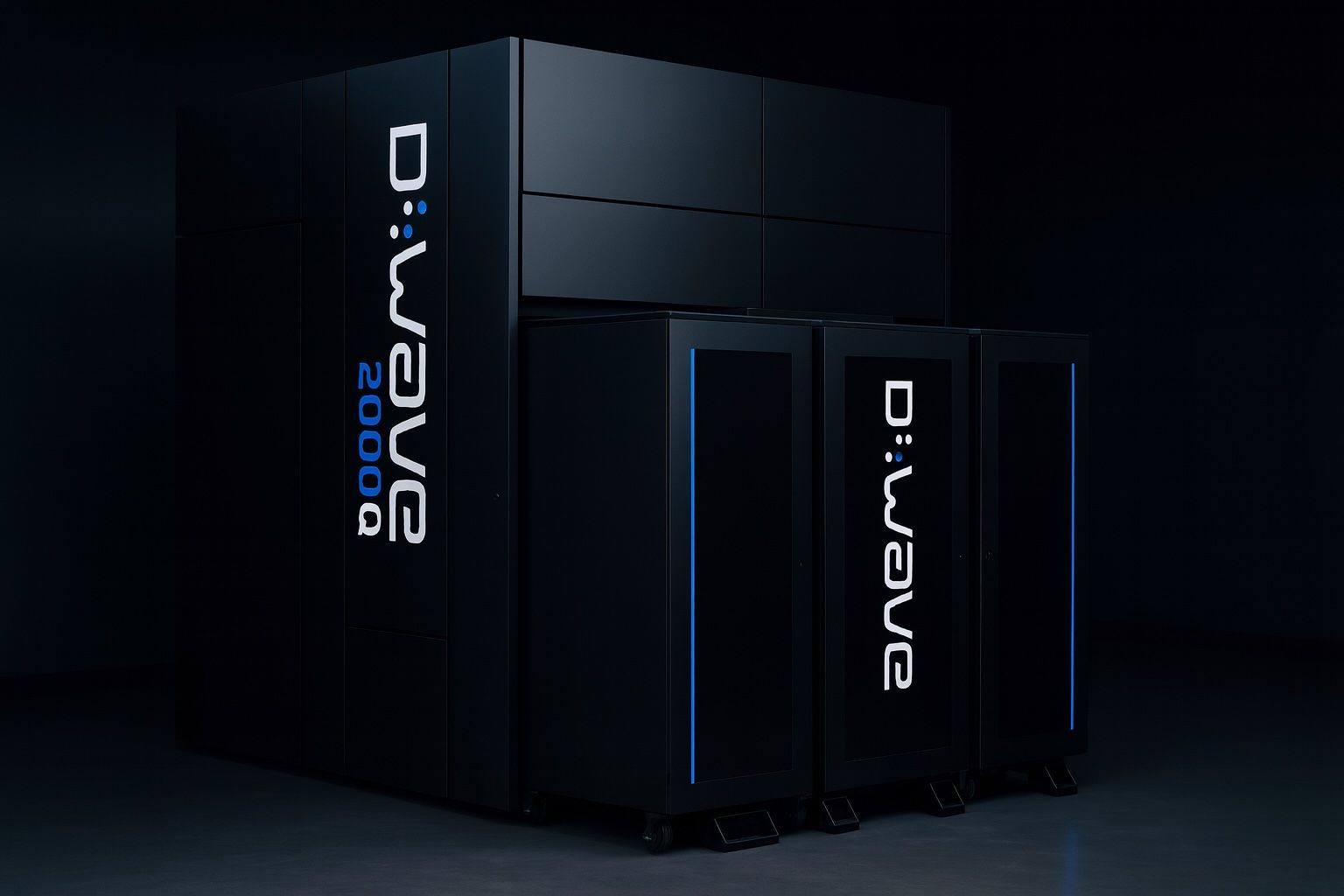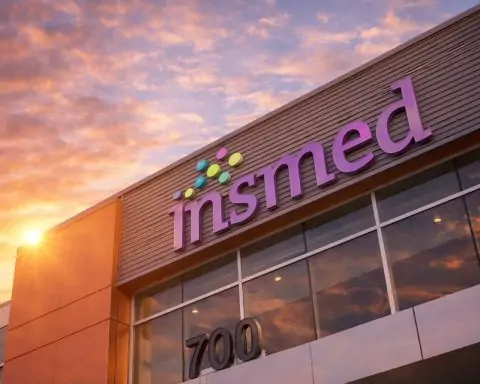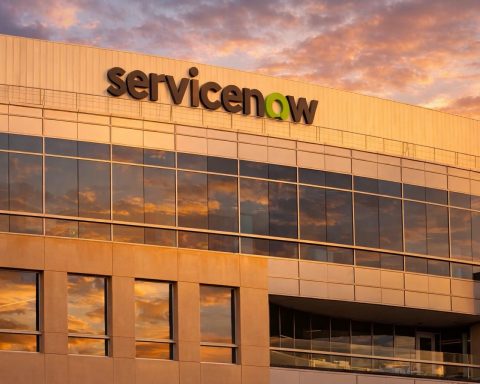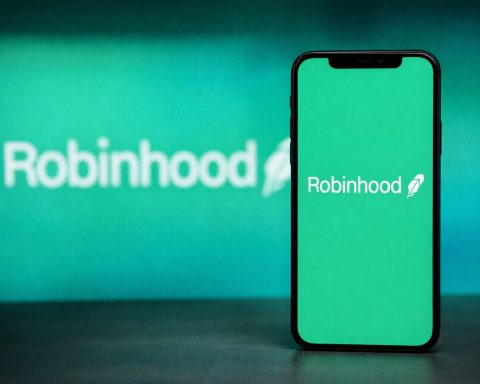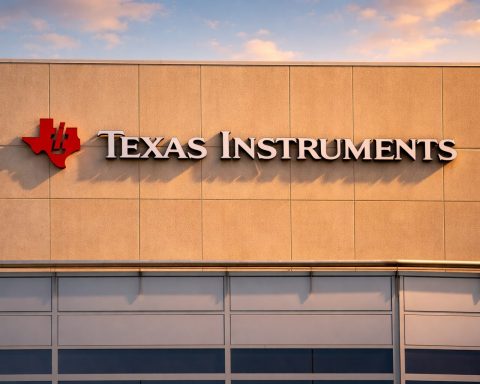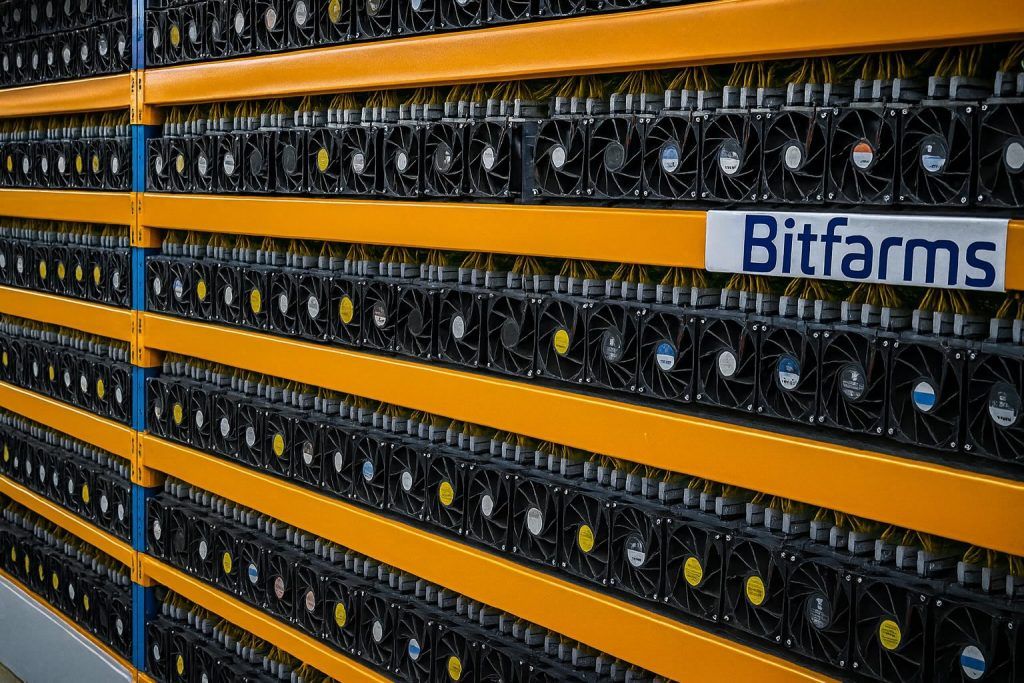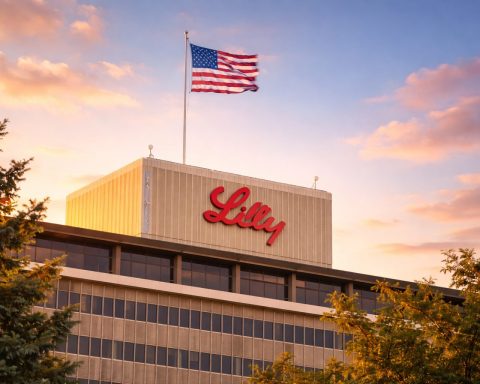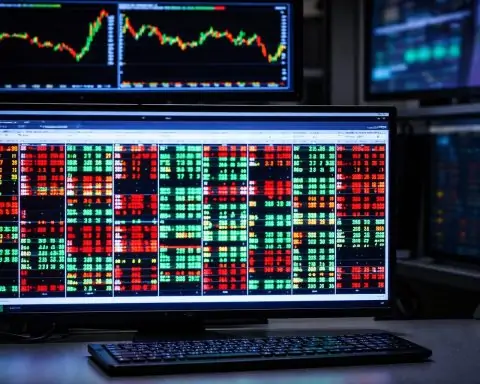- Explosive Rally: D-Wave Quantum’s stock (NYSE: QBTS) has surged dramatically – roughly +3000% over the past year – reaching an intraday peak of $46.75 on Oct. 15, 2025 [1]. Even after a sharp pullback in mid-October, QBTS remains up about +300% for 2025 [2].
- Recent Price Action: After peaking, QBTS plunged roughly 35% into late October (falling from ~$44.78 on Oct. 15 to about $27.29 by Oct. 22 [3] [4]). A broad tech-sector selloff (driven by U.S. export-control headlines) hit the quantum names on Oct. 22 – D-Wave fell ~15% that day [5] [6]. The very next day (Oct. 23), reports that the U.S. government is negotiating equity-for-funding deals in quantum firms (including D-Wave) sent QBTS sharply higher (pre-market gains ~+16% on Oct. 23 [7] [8]).
- Catalysts: Key breakthroughs and deals have fueled the rally. In mid-Oct. D-Wave announced a €10 million Advantage2 quantum computer sale for Italy’s new “Q-Alliance” hub [9]. Other recent developments include hands-on quantum seminars at Italian universities (Oct. 22) and ongoing pilot projects – for example, a UK police dispatch optimization that cut planning times from months to minutes (halving response times) [10] [11]. The company also forged partnerships worldwide, such as a memorandum with Yonsei University (South Korea) to install an Advantage2 system [12], and exploratory projects with firms like E.ON, GE, Nikon, NTT and Sharp [13]. These “real-world” use cases underpin CEO Alan Baratz’s claim that hybrid quantum computing is “beginning to show real-world potential” [14] [15].
- Valuation & Financials: Despite the hype, D-Wave remains a very early-stage company. Revenue is tiny (H1 2025 total ~$18M [16]) and it is unprofitable (Q2 GAAP loss ~$167M, mostly accounting adjustments [17]). Its massive rally means the stock trades at hundreds of times sales. On the plus side, a $400M at-the-market stock offering in Q2 2025 boosted cash to about $800–820M [18], giving the firm a multi-year runway. Analysts note the stock is driven more by momentum than fundamentals [19].
- Analyst Views: Wall Street is polarized. Bullish firms see D-Wave as a first-mover: Roth Capital recently lifted its 12-month target to $50, and B. Riley to $33 [20], citing growing commercial traction. By contrast, other analysts have $20–22 targets [21]. The consensus (around the mid-$20s) is well below recent prices [22] [23]. Pessimists call QBTS “extraordinarily rich” (Zacks) and warn of “sharp swings” (Weiss Research) [24]. Jim Cramer has even cautioned investors not to “be fooled” by the quantum hype and to sell into rallies [25].
- Government Involvement: D-Wave’s fortunes may also hinge on U.S. policy. Reports on Oct. 23 say the Trump administration’s Commerce Department (led by Deputy Sec. Paul Dabbar) is considering taking equity stakes in quantum startups, including D-Wave, in exchange for roughly $10 million in federal R&D grants per company [26] [27]. News of these talks (unconfirmed by officials) sent quantum stock prices swinging – after the Oct. 22 sell-off, D-Wave rallied ~16% on the funding-for-stake reports [28] [29]. This government push underscores quantum computing’s strategic importance, but also injects uncertainty (potentially limiting overseas market access and drawing scrutiny).
Stock Performance & Volatility
D-Wave’s stock story in 2025 has been nothing short of dramatic. After languishing near $1 in late 2024, QBTS entered 2025 on a tear. By early October it had more than tripled on the year, and on Oct. 15 it briefly hit $46.75 – an astonishing jump of roughly 3,000% from a year prior [30]. However, the post-peak price action has been a roller coaster. In the days following Oct. 15, QBTS tumbled: it fell ~35% from its high to close around $27.29 on Oct. 22 [31]. On Oct. 21 it fell ~6%, then another ~15% on Oct. 22 [32]. That drop coincided with a broad tech sell-off: investors fretted over U.S. tech export curbs to China and took profits after months of gains [33] [34].
By the close of Oct. 22, QBTS was trading in the high-$20s. Reuters noted that on Oct. 23 it was “trading lower” around $27.29 [35]. But midday Oct. 23 brought a turnaround: after Bloomberg and WSJ reports on government funding talks, D-Wave jumped sharply in pre-market and after-hours trading [36]. (TS2 reported a ~+16.3% move on Oct. 23 [37].) This volatility is emblematic of the stock’s speculative euphoria. Volume has been heavy (tens of millions of shares daily), and technical indicators showed “overbought” conditions after the rally, meaning sharp swings were likely [38] [39]. Even with the pullback, 2025 remains a banner year: as of late October, QBTS is still up on the order of 300% for the year [40] [41].
Key Developments & Partnerships
Behind the price moves are concrete corporate milestones. In mid-October D-Wave announced its largest European hardware sale to date: a €10 million contract with Swiss Quantum Technology SA to install a 4,400+ qubit Advantage2 annealer at Italy’s new “Q-Alliance” quantum hub [42]. CEO Alan Baratz hailed this as a “critical component” for Europe’s quantum development [43]. Just days later (Oct. 22) D-Wave began running hands-on workshops at Italian universities (Insubria and USI) to train students on the new system, aiming to make Italy “a global hub of quantum innovation” [44] [45].
These Europe-focused efforts complement global outreach. Earlier in 2025 D-Wave signed a memorandum with South Korea’s Yonsei University to install an Advantage2 system on campus [46] – the first D-Wave machine in that region. The company has also engaged numerous large organizations in pilot projects. Press materials cite work with Germany’s E.ON (energy), Japan’s Nikon (manufacturing optics), and tech giants like NTT and Sharp [47]. In the U.S., D-Wave has partnered on projects with Volkswagen, NASA, and even the U.S. Air Force (via a Rigetti hardware sale), signaling interest from both industry and government. Notably, a publicized UK police dispatch trial used D-Wave’s hybrid quantum solver to slash emergency response times by roughly 50% [48] – a real-world win that Baratz says proves “quantum computing… is beginning to show real-world potential” [49].
On the technical front, D-Wave’s new Advantage2 system (6th-generation annealer) has been generally available since earlier in 2025. It boasts over 5,000 qubits and, on certain optimization benchmarks, up to 400× speed improvements over D-Wave’s prior machine [50]. Unlike many quantum competitors, D-Wave’s machines are commercially deployed in client sites and via its cloud platform (Leap). Each big system sale (like the Italian deal) is rare enough to warrant its own press release. A series of such wins in Q1–Q2 2025 (including a $15M sale to Davidson Technologies and upgrades in Germany) drove Q1 revenue to ~$15M (up 509% YoY) [51]. These deals are helping shift D-Wave from pure R&D toward an actual business, albeit on a small base so far.
Another notable move: on Oct. 20 D-Wave announced it will forcibly redeem all ~5 million of its public warrants (issued in the SPAC merger) at $0.01 each [52]. This means holders must either exercise or forfeit rights to buy shares at $11.50. The plan (coming in mid-November) simplifies the cap table but was viewed by some as modestly dilutive (the warrant redemption news briefly pushed the stock down ~10% on Oct. 21) [53].
Government Backing & Policy Drivers
Quantum computing has become a national priority, and D-Wave stands to be a key player. Reports on Oct. 23 indicated the U.S. Commerce Department (under the Trump administration) is in talks to take equity stakes in quantum startups – including IonQ, Rigetti and D-Wave – in exchange for roughly $10 million each in federal funding [54] [55]. (This would echo a recent deal with Intel, where the government took a 10% stake for $9B in CHIPS Act money [56].) Such news is electrifying for the market: Wall Street Journal and Reuters sources say these conversations are ongoing, though a Commerce spokeswoman has not confirmed any deals [57] [58].
The mere prospect of government investment has had immediate market impact. After the Oct. 22 tech sell-off, the Oct. 23 news caused all the pure-play quantum stocks to rebound strongly. Early trading on Oct. 23 saw D-Wave jump ~16%, Rigetti +15.6%, and IonQ +14.7% [59]. Even the quantum-focused ETF QTUM surged ~3%. This suggests investors view state support as a bullish catalyst for the sector, potentially accelerating commercialization. (On the flip side, fears of export controls – such as proposed curbs on tech and AI sales to China – were cited as a drag on Oct. 22’s selloff [60] [61], since global cooperation is important for quantum research and sales.)
The U.S. government’s interest underscores the huge strategic and economic stakes in quantum. Some commentators now frame quantum computing as a national security race: the funding-for-equity news reflects Washington’s willingness to own cutting-edge tech, not just subsidize it [62] [63]. At the same time, major tech companies like Google and IBM are also pushing boundaries. Just as quantum stocks surged, Google announced that its 65-qubit “Willow” quantum processor achieved a quantum advantage in simulating physics [64]. This both validates the field’s promise and ratchets up competition, since D-Wave’s annealing approach is very different from gate-model systems. In sum, D-Wave is benefiting from massive public and private focus on quantum, but that also means regulatory and geopolitical news can move its stock.
Analyst Commentary & Investor Sentiment
Wall Street analysts and media pundits are on both sides of the aisle. On the bull side, some see D-Wave as uniquely positioned in an emerging industry. For example, Roth Capital analyst Suji Desilva (a quantum specialist) argues that D-Wave’s recent deals signal “growing commercial traction” and kept a Buy rating (lifting his price target to $50) [65]. B. Riley’s Craig Ellis similarly raised his target to $33 [66]. These bulls point out that D-Wave is signing blue-chip customers and building a global installed base before many rivals. CEO Baratz himself emphasizes milestones: the Advantage2 launch, the police pilot, and now the Europe sale as proofs that “quantum computing can deliver faster, more efficient outcomes than classical methods” in specific domains [67] [68]. (Baratz noted after the Advantage2 announcement that it “marks a significant milestone not just for D-Wave, but for the quantum computing industry as a whole” [69].)
But the bears have a loud voice. Many analysts emphasize that D-Wave’s fundamentals lag its market cap. The average 12-month target is only in the low $20s [70], implying downside if sentiment cools. Zacks and Weiss have each issued Sell ratings [71]. MarketBeat quoted warnings that the stock could fall another 10–15% if the quantum frenzy abates [72]. CNBC’s Jim Cramer (Oct. 21) told viewers not to “be fooled” by the hype, suggesting that speculative pockets like quantum may not go down quietly – basically advising selling into rallies [73]. In print media, outlets like Fast Company and InsiderMonkey have described QBTS’s gains as part of a “quantum gold rush” but also cautioned they are “highly speculative” [74] [75]. As one TS2 analysis put it, QBTS is already a “poster child” of 2025’s quantum-investing mania [76], for better or worse.
On the balance sheet, D-Wave’s huge cash hoard (~$800M) provides cover for now, but analysts note it will likely need more funding down the road unless revenues pick up sharply [77] [78]. Some bulls argue D-Wave could even make acquisitions to accelerate growth. Others point to policy upside: any large government contract or grant could be a major catalyst. For instance, if QBTS were to land big federal quantum projects (analogous to NSA’s interest in IBM and Google), that could justify a higher multiple. But those outcomes are uncertain.
Quantum Industry Context
D-Wave’s saga is unfolding amid a broader quantum-computing stock frenzy. Its main publicly traded peers – IonQ (gate-based trapped-ion machines) and Rigetti (superconducting gate-model chips) – have seen stock booms of their own. In fact, IonQ soared even more in absolute terms, briefly trading around $75 in early Oct (up ~700% YTD) for a $20B+ market cap [79]. Rigetti, a smaller firm, also spiked ~2,500% year-over-year (to about a $10B market cap) after announcing its first multi-million-dollar hardware orders [80]. All these companies, like D-Wave, have tiny revenues (Rigetti Q2 was just $1.8M [81]) but are valued like tech growth stories. Even industry giants are talking up the space: NVIDIA’s CEO said quantum is nearing an “inflection point,” and consulting firm McKinsey projects the quantum market could jump from $4 billion in 2024 to $72 billion by 2035 [82].
That said, technical challenges remain. Current quantum systems (outside D-Wave’s annealers) struggle with errors, and “fault-tolerant” quantum computers are still years away. Some experts note that annealing – D-Wave’s specialty – excels at optimization but isn’t a general solution for all quantum algorithms [83]. If gate-model machines mature faster or big tech outpaces them (e.g. Google’s or IBM’s roadmaps), D-Wave could face extra pressure. For now, investors seem to be betting on D-Wave’s ability to stay in the vanguard: it was the first to commercialize a quantum computer, and has the most customers using it in the field.
Outlook
Looking ahead, the big question for QBTS is sustainability. In the near term, all eyes will be on D-Wave’s next earnings (Q3 2025, due mid-November). Investors will watch whether revenue growth continues (e.g. more Advantage2 sales or cloud bookings) and if guidance points higher. A better-than-expected quarter could reignite optimism; a miss or lack of new deals would likely trigger a sell-off, given how elevated expectations are [84].
Longer term, forecasts vary wildly. Bullish models envision D-Wave ramping revenues double- or triple-digit annually as quantum adoption ramps (some have speculated reaching ~$100M by 2026–27 would start to justify today’s multiples) [85]. Skeptics note there’s almost no margin for error: the company will probably need to raise more cash (diluting shareholders) unless sales explode. The stock’s path may hinge on broad investor sentiment toward speculative tech – as one analyst quipped, markets are effectively betting on future roadmaps as much as current results [86] [87].
In summary, D-Wave sits at the center of a high-stakes “quantum gold rush.” Recent breakthroughs and high-profile deals have propelled its stock to stratospheric levels, drawing in both institutional and retail traders. But with mainstream valuation ratios more akin to an AI or biotech darling, many warn of a correction if the company fails to rapidly translate its technology into sustained revenue. As one finance commentator put it, investors should “brace for increased volatility” – they see D-Wave as a pioneering player that could revolutionize computing, yet also as a bet on an unproven market [88] [89]. The coming weeks (with the earnings report and any new government news) will likely prove decisive in determining whether this is indeed a historic breakthrough or another example of a blistering tech bubble.
Sources: Latest financial news, company filings, and industry reports (TechStock²/TS2, TipRanks, Benzinga, Investing.com/MarketBeat, and The Quantum Insider among others) [90] [91] [92] [93] [94] [95].
References
1. ts2.tech, 2. ts2.tech, 3. ts2.tech, 4. ts2.tech, 5. www.tipranks.com, 6. www.benzinga.com, 7. ts2.tech, 8. thequantuminsider.com, 9. ts2.tech, 10. ts2.tech, 11. ts2.tech, 12. ts2.tech, 13. ts2.tech, 14. ts2.tech, 15. www.investopedia.com, 16. ts2.tech, 17. ts2.tech, 18. ts2.tech, 19. ts2.tech, 20. ts2.tech, 21. ts2.tech, 22. ts2.tech, 23. ts2.tech, 24. ts2.tech, 25. ts2.tech, 26. ts2.tech, 27. thequantuminsider.com, 28. ts2.tech, 29. www.tipranks.com, 30. ts2.tech, 31. ts2.tech, 32. ts2.tech, 33. www.tipranks.com, 34. www.benzinga.com, 35. ts2.tech, 36. ts2.tech, 37. ts2.tech, 38. ts2.tech, 39. ts2.tech, 40. ts2.tech, 41. www.benzinga.com, 42. ts2.tech, 43. ts2.tech, 44. ts2.tech, 45. ts2.tech, 46. ts2.tech, 47. ts2.tech, 48. ts2.tech, 49. ts2.tech, 50. ts2.tech, 51. www.techi.com, 52. ts2.tech, 53. ts2.tech, 54. ts2.tech, 55. thequantuminsider.com, 56. ts2.tech, 57. ts2.tech, 58. thequantuminsider.com, 59. ts2.tech, 60. www.tipranks.com, 61. www.benzinga.com, 62. ts2.tech, 63. thequantuminsider.com, 64. thequantuminsider.com, 65. ts2.tech, 66. ts2.tech, 67. ts2.tech, 68. www.investopedia.com, 69. www.investopedia.com, 70. ts2.tech, 71. ts2.tech, 72. ts2.tech, 73. ts2.tech, 74. ts2.tech, 75. ts2.tech, 76. ts2.tech, 77. ts2.tech, 78. ts2.tech, 79. ts2.tech, 80. ts2.tech, 81. ts2.tech, 82. ts2.tech, 83. www.techi.com, 84. ts2.tech, 85. ts2.tech, 86. ts2.tech, 87. ts2.tech, 88. ts2.tech, 89. ts2.tech, 90. ts2.tech, 91. ts2.tech, 92. thequantuminsider.com, 93. www.investopedia.com, 94. www.techi.com, 95. www.benzinga.com
